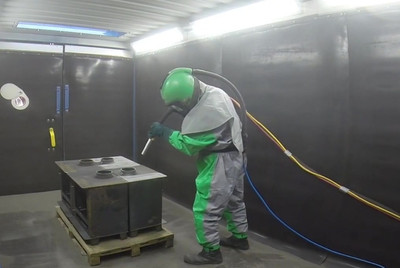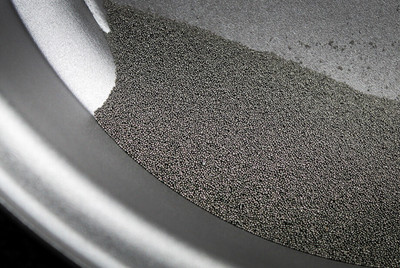12th Jun 2024
Sandblasting, now better known as abrasive blasting, is a popular technique used for cleaning, smoothing, or shaping surfaces by propelling an abrasive material against them at high velocity. When it comes to stainless steel, a material prized for its corrosion resistance and sleek appearance, you might wonder if sandblasting is a suitable process. Let's explore the answer in detail.
What is sandblasting?
Sandblasting involves forcibly projecting a stream of abrasive particles against a surface to remove contaminants, rust, paint, or to etch designs. This technique is commonly used on a variety of materials, including metals, glass, and wood. The abrasives used can range from traditional sand to more modern materials like aluminium oxide, glass beads, and silicon carbide, although sandblasting with sand is illegal in the UK.
Can you sandblast stainless steel?
Yes, you can sandblast stainless steel. However, there are specific considerations and best practices to keep in mind to ensure the process is effective and does not damage the material.
What are the benefits and drawbacks of sandblasting stainless steel?
Sandblasting prepares the surface for subsequent treatments, such as painting or coating, by removing rust, scale, or old paint, and can give stainless steel a unique, uniform matte finish, enhancing its aesthetic appeal and longer-lasting finishes.
One of the few drawbacks of sandblasting stainless steel is the need for specialised abrasive materials. Using the wrong abrasive or technique can harm the surface, resulting in irreversible damage.
Choosing the right abrasive
Every abrasive will have different results, with some better suited for blasting materials than others. Abrasives best suited for blasting stainless steel include:
- Glass beads: Ideal for stainless steel, glass beads provide a smooth, satin finish without causing damage. They are non-reactive and do not embed into the surface.
- Aluminium oxide: This abrasive is more aggressive and can be used for heavy-duty cleaning or etching, but it requires careful handling to avoid excessive surface roughness.
- Silicon carbide: Suitable for more intense blasting needs, it is harder and sharper, offering quick material removal but can be harsh on the surface.
Preparation and safety
Operators should be working in a well-ventilated area to minimise exposure to dust and debris, and should be wearing appropriate safety gear, including gloves, goggles, and respiratory protection. Your sandblasting equipment should be regularly maintained to reduce risks and malfunctions, and operators should be fully trained and competent in using it.
Ensure the metal is clean and free from any large debris or oils that could interfere with the sandblasting process beforehand. Lower pressure settings (between 40-60 PSI) are generally recommended for stainless steel to avoid warping or surface damage. Maintaining an appropriate distance from the surface and a consistent blasting technique is crucial to control the impact intensity and ensure an even finish. We would recommend always performing a test blast on a small, inconspicuous area to gauge the effect of the abrasive and adjust settings accordingly.
You can see our blog What do you need to sandblast? to get an in-depth explanation of what tools you will need to sandblast efficiently.
Sandblasting stainless steel is not only possible but can be highly effective when done correctly. By choosing the right abrasives, adjusting pressure and distance, and following best practices, you can achieve excellent results, whether for cleaning, surface preparation, or decorative purposes. Always prioritise safety and meticulous technique to preserve the integrity and appearance of your stainless steel projects.




